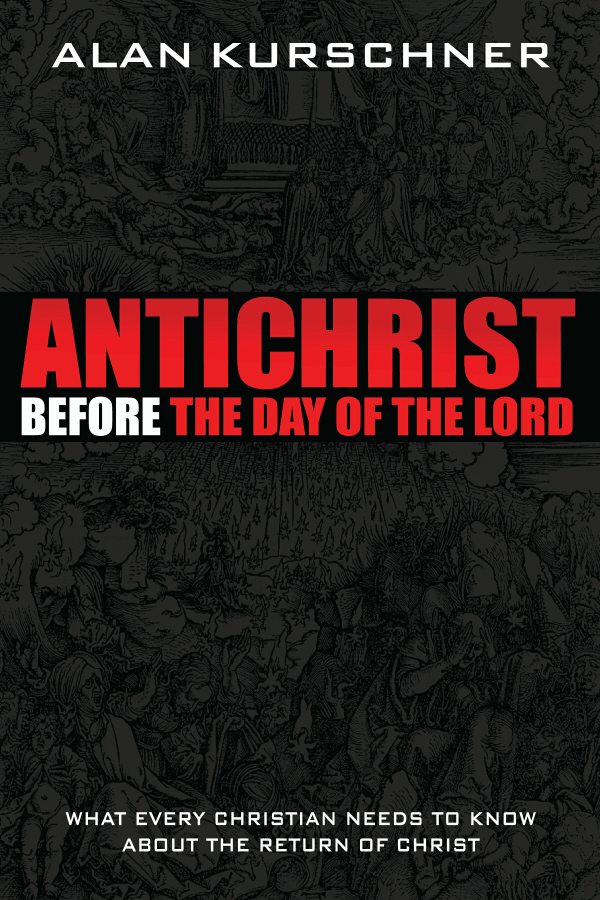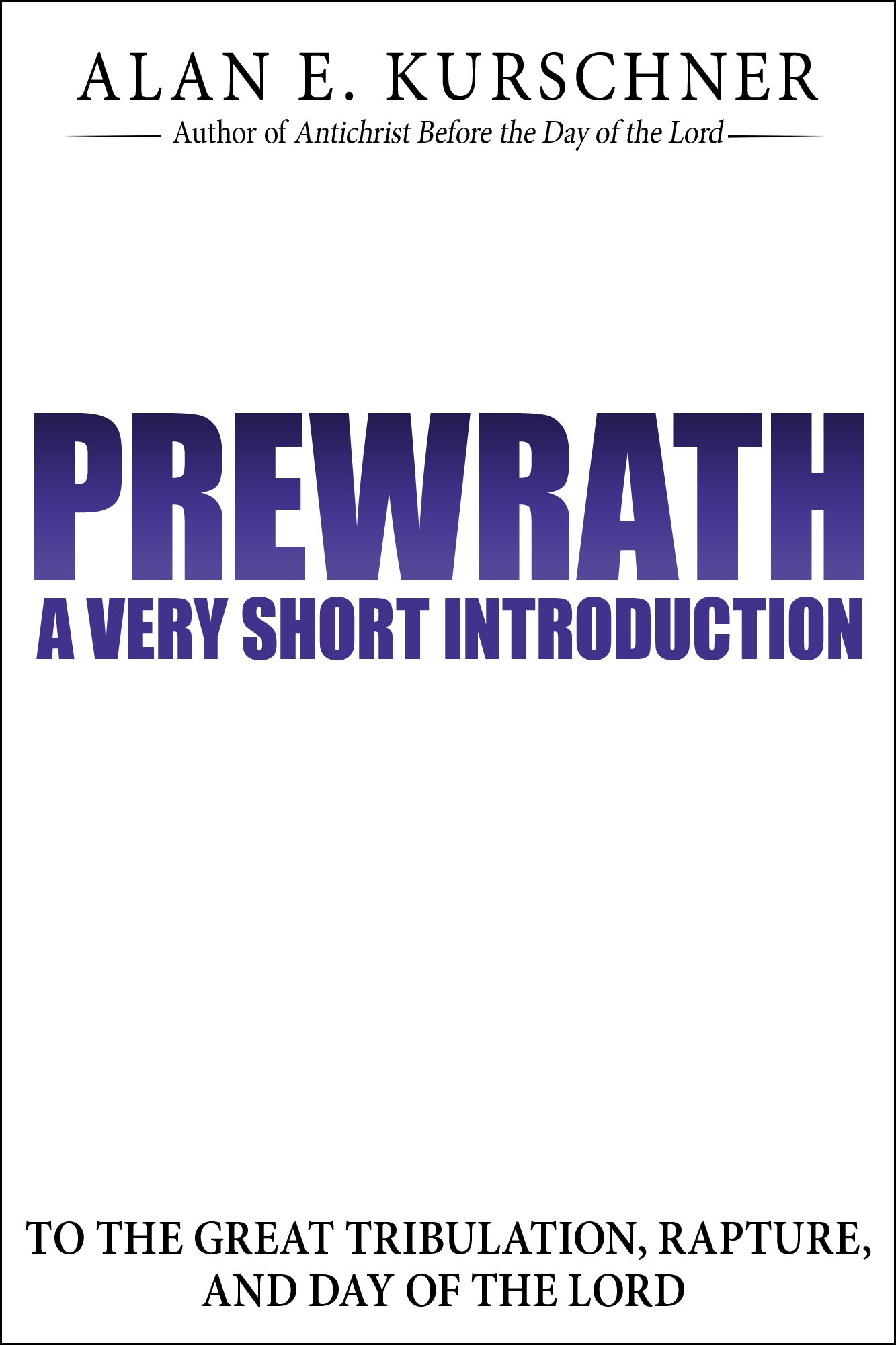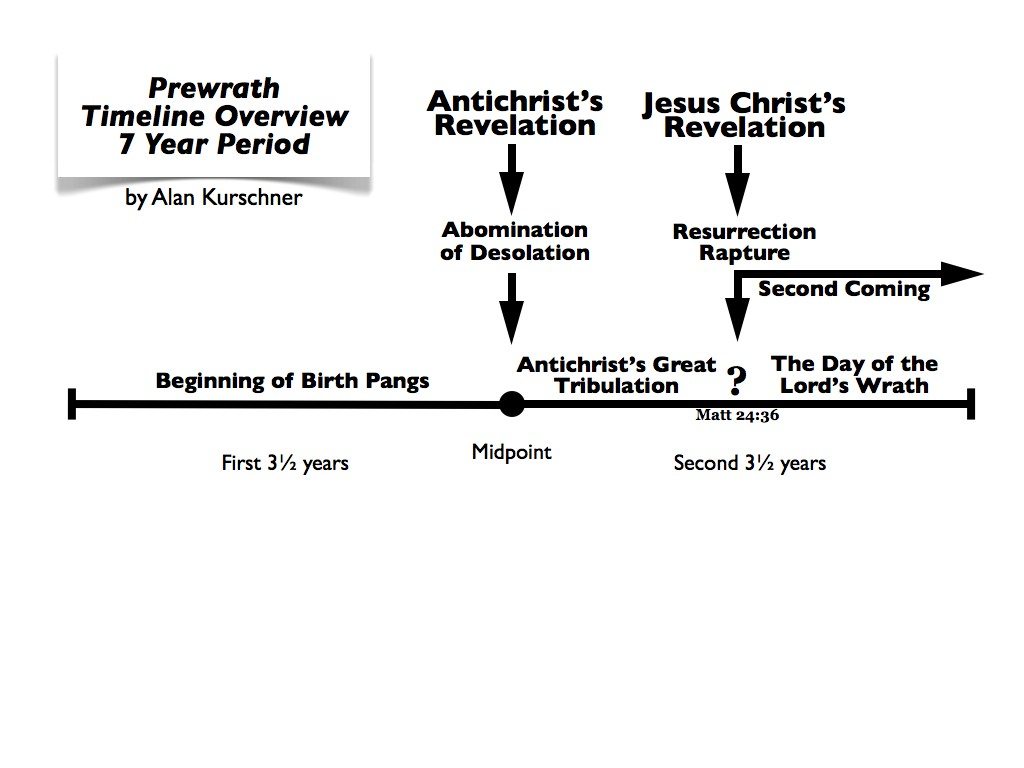*The following description below is a brief overview. For books on prewrath click on the images above.
WHAT IS PREWRATH?
by ALAN KURSCHNER
Many of us were told that the church will be “raptured out of here before the Antichrist’s arrival.” The Bible, however, teaches the church will first experience the Antichrist’s great tribulation. Then, at some unknown day and hour, Antichrist’s persecution will be cut short by the return of Christ to resurrect and rapture believers before the day of the Lord’s wrath—hence, Prewrath.
The purpose why the church will suffer greatly just before Christ’s second coming will be for purging and purifying, separating out those who claim to have faith from those who actually possess true faith. But believers are promised deliverance before the day of the Lord’s wrath. Accordingly, there is an important biblical distinction between the events of the Antichrist’s great tribulation and the day of the Lord’s wrath. Antichrist’s great tribulation will be directed against the church, followed by the day of the Lord’s wrath directed against the ungodly. The apostle Paul states:
Now regarding the arrival of our Lord Jesus Christ and our being gathered to be with him, we ask you, brothers and sisters, not to be easily shaken from your composure or disturbed by any kind of spirit or message or letter allegedly from us, to the effect that the day of the Lord is already here. Let no one deceive you in any way. For that day will not arrive until the rebellion comes and the man of lawlessness [Antichrist] is revealed, the son of destruction. (2 Thess 2:1–3)
ANTICHRIST’S GREAT TRIBULATION
The great tribulation will begin at the time of the “abomination of desolation” (Matt 24:15, 21). Jesus, drawing from the prophet Daniel, uses this expression to personify Antichrist as a detestable idol that causes sacrilege (Dan 9:27, 12:11). Paul describes the Antichrist as “the man of lawlessness,”
He opposes and exalts himself above every so-called god or object of worship, and as a result he takes his seat in God’s temple, displaying himself as God. (2 Thess 2:4; cf. Dan 7:25; 11:36; Rev 13:5–6)
Jesus, Paul, and the book of Revelation warn of the Satanic deception of signs and wonders associated with the Antichrist (Matt 24:24; 2 Thess 2:9; Rev 13:13–14). The Antichrist’s great tribulation against believers, Jesus says, will be “unlike anything that has happened from the beginning of the world until now, or ever will happen” (Matt 24:21; cf. Rev 13). Believers will risk persecution because they will refuse to follow Antichrist:
If anyone is meant for captivity, into captivity he will go. If anyone is to be killed by the sword, then by the sword he must be killed. This requires steadfast endurance and faith from the saints. (Rev 13:10; cf. Rev 14:9–13)
So great the martyrdom that Jesus says, “And if those days had not been cut short, no one would be saved. But for the sake of the elect those days will be cut short” (Matt 24:22; cf. 2 Thess 1:7). It is no wonder why the fifth seal martyrs cry out to God, “How long, Sovereign Master, holy and true, before you judge those who live on the earth and avenge our blood?” (Rev 6:10).
CELESTIAL DISTURBANCE
God hears their prayers and he eventually cuts short the great tribulation by the return of Christ to first deliver his people and then execute his wrath upon the wicked. Just before this occurs, Jesus says a celestial event will take place:
Immediately after the tribulation of those days the sun will be darkened, and the moon will not give its light, and the stars will fall from heaven, and the powers of the heavens will be shaken. (Matt 24:29–30 ESV; cf. Luke 21:25–26; Rev 6:12–17)
The prophet Joel explicitly prophesies that these celestial disturbances will happen “before the Day of the Lord comes” (Joel 2:31). For the ungodly, the celestial disturbances signal impending wrath (Luke 21:26). It is also graphically depicted in the sixth seal (Rev 6:15–17). But for believers, it is a signal to “stand up and raise your heads, because your redemption is drawing near” (Luke 21:28).
RESURRECTION AND RAPTURE
Christ will then appear in the sky in all his splendid glory and his angels “will gather his elect from the four winds, from one end of heaven to the other”(Matt 24:31). Paul expands on this gathering using explicit resurrection and rapture language (1 Thess 4:13–18). Between the sixth and seventh seal, the book of Revelation depicts the raptured as “a great multitude that no one could number” who were “the ones who have come out of the great tribulation” (Rev 7:9, 14). This is followed by the onset of God’s judgment (Rev 8:1–6).
DAY OF THE LORD’S WRATH
The prophets describe this period as righteous judgment, vengeful, fiery, dreadful, inescapable, bloody, destructive, and decisive (e.g. Joel 2:28–3:21; Isa 2:10–22; 13:6–13; Obad 15; Zeph 1:1–18). Jesus, Paul, and Peter warn these judgments are for the ungodly (Matt 24:37–41; 1 Thess 5:1–11; 2 Pet 3:1–18). On the same day the rapture occurs, the day of the Lord’s wrath begins, just as it was in the days of Noah and Lot (Luke 17:22–37; cf. 2 Thess 1:5–10). The book of Revelation teaches that the wrath begins at the breaking of the seventh seal, which contains the trumpet and bowl judgments (Rev 8–9, 15–16).
In light of this sober teaching, it is imperative that we spiritually prepare our hearts to be “overcomers” for what may soon come to pass, because Jesus warned:
“Remember, I have told you ahead of time.” —Matt 24:25
PDF summary on the Prewrath position:
What Is Prewrath?





